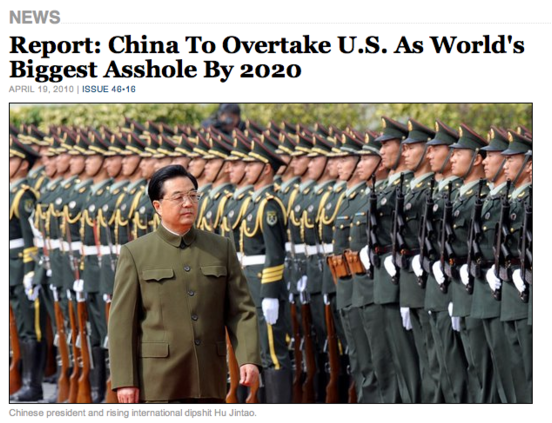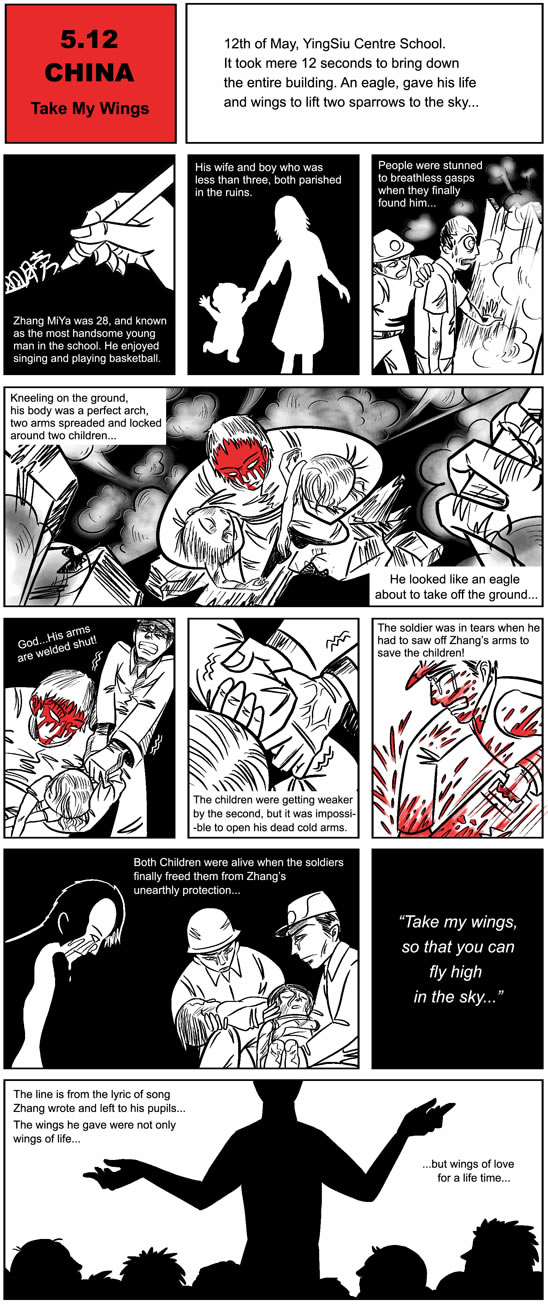Manchmal findet man solche einen Gedanken, der einem plötzlich vieles aufschließt, was vorher kaum verständlich scheint – wie etwa das chinesische strategische Selbstbild in der heutigen Welt.
China ist nämlich eigentlich eine Insel, obwohl es Grenzen mit 14 Nationen hat. Seine Bevölkerung, seine bebaubare Ackerfläche, seine Naturschätze und seine Wirtschaftskraft sind in einem vergleichsweise kleinen Teil der Staatsfläche konzentriert. Im Südosten, Osten, Norden und Nordwesten bilden Meer, Gebirge, Wüste und Steppe natürliche Grenzen. So sieht man es auf dieser Karte (danke, Strange Maps!):

The Chinese heartland, pictured here as the part of China above water, is favourable to agriculture and has traditionally held the bulk of the Chinese population (i.e. the ethnic Han, whom we think of as ‘the’ Chinese); Over a billion people live here, in an area half the size of the US. The heartland’s northern part is dominated by the Yellow River and speaks Mandarin, the southern part by the Yangtze River and by Cantonese.
Population pressure has always pushed China to expand into Tibet, Xinjiang, Mongolia and Manchuria. Another factor is the historical threat emanating from this non-Han ‘shell’ surrounding the Han heartland, for example from the nomad Mongol horsemen that have long threatened and occasionally dominated the sedentary, agricultural Han.
In the past, when the Chinese state was strong, it managed to conquer and rule these outlying areas, providing a defensive buffer for the heartland. When central authority was weak, these fringes broke off – leaving the heartland vulnerable to invasion. China is strong again, even up to the point where the fringes now are the target of large migrations of Han, much to the chagrin of the native peoples.
This Han-ification of the Chinese fringe does not necessarily imply that the Chinese have more contact with the countries beyond their borders. Only in three places are the Chinese borders naturally permeable: at the Vietnamese frontier, via the Silk Road, and near Russian Far East. Hilly jungles separate China from Laos and Burma, the Himalayas shield it from the Indian subcontinent, almost impassable deserts divide it from Central Asia and the forbidding expanses of Siberia have never appealed to Chinese expansionism (until now, as the Russians fear).
With the exception of the Ming dynasty’s sponsorship of admiral Zheng He’s naval expeditions (as far away as Sri Lanka, Arabia and Africa) in the early 15th century, China has never attempted to be a naval-based power – so for most of its history, China’s ports on the Pacific were hardly windows on the world either.
China’s relative isolation, combined with the size of its population (1 in every 5 humans is Chinese), means China is virtually impossible to subdue militarily (as the Japanese discovered to their disadvantage in the 1930s). It also means China can – and often has – turned its back on the world, existing in splendid isolation.
Its size and its penchand for autarkism dictate China’s three main geopolitical objectives:
- maintain unity of the Han heartland;
- maintain control over the non-Han buffer zone;
- deflect foreign encroachment on the Chinese coast.
Clearly isolationist, these objectives also condemn China to poverty: as a densely populated country with limited arable land, China needs internatioal trade to prosper. The paradox is that prosperity will lead to instability. Prosperity will tend to be concentrated in the areas trading with the outside world (i.e. the coastal regions), creating economic tensions with the poorer interior. This might destabilise the Han heartland.
This is exactly what happened during an earlier ouverture towards the outside world, in the early 20th century. And this is why Mao’s revolution first failed in the coastal areas, and only succeeded after his Long March towards the poorer interior. Mao’s victory allowed him to reassert central control from Beijing (also over the buffer regions which had ‘drifted away’, such as Tibet). He also ‘re-isolated’ the country, in the process making everybody equally poor again.
In the late 1970s, early 1980s, Deng Xiaoping took the gamble of reopening China in order to make it prosperous again. He counted on Mao’s strong, centralised, single-party state system to keep the country together. Time will tell whether he was right, for the main threat to China’s geopolitical goals has again become the economic bifurcation of the Han heartland, with 400 million Chinese living in the relatively wealthy coastal areas, and 900 million in the often still desperately poor interior.
China is now less isolated than it once was – although its points of contact remain coastal rather than terrestrial, meaning the insularity portrayed in this map has not completely vanished. But what makes the Chinese leadership nervous is that its Deng-instigated preference for prosperity over stability is precariously linked to circumstances beyond Beijing’s total control: the health and growth of the global economy. What will happen if a global recession threatens the Chinese model? Will the fringe rebel, will the heartland fracture? Or will the center hold – if necessary by again choosing the stability of an isolationist, hardline dictatorship over openness and prosperity?
Das sind die Fragen, die wegen der heutigen Verflechtung Chinas mit der Welt nicht nurfür Chinesen vital sind.




